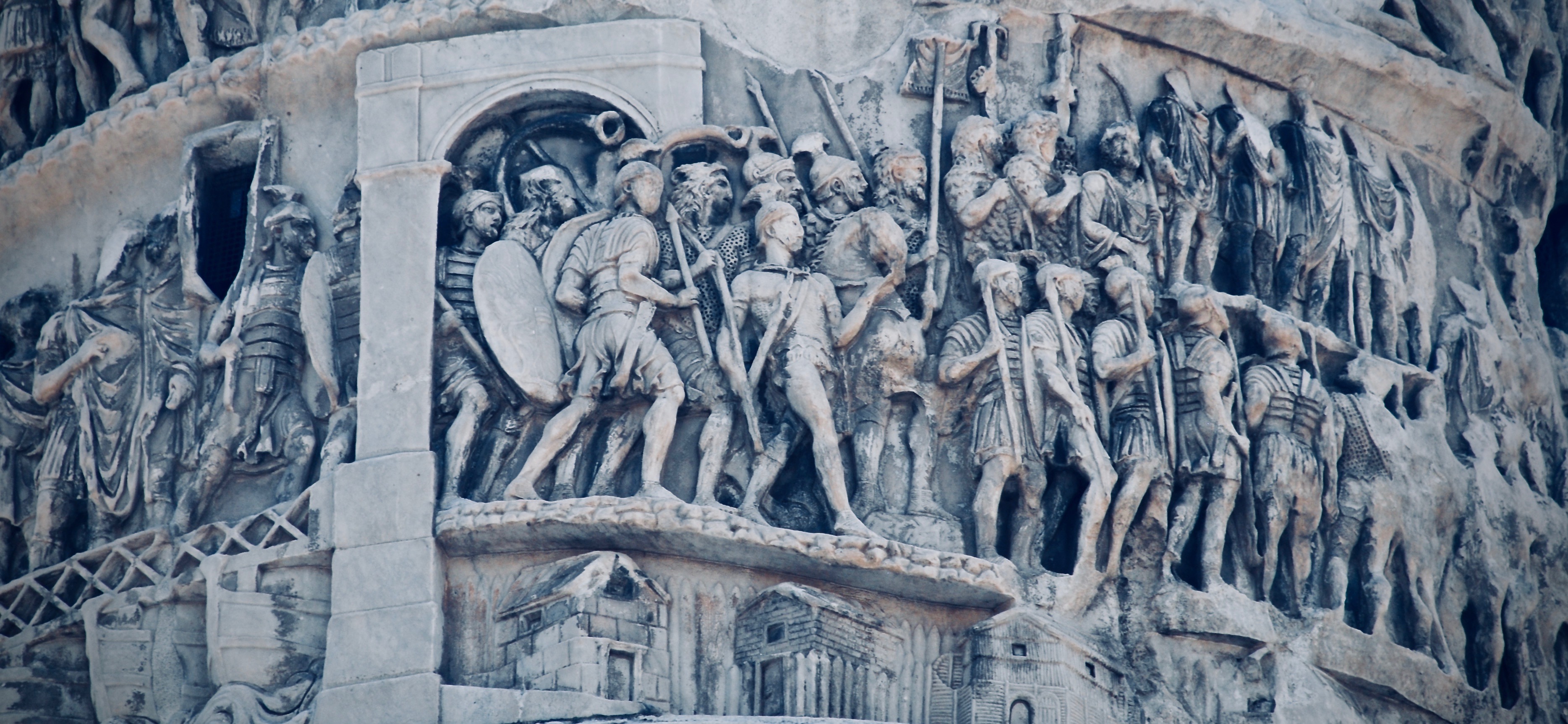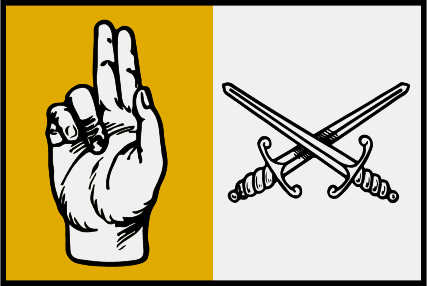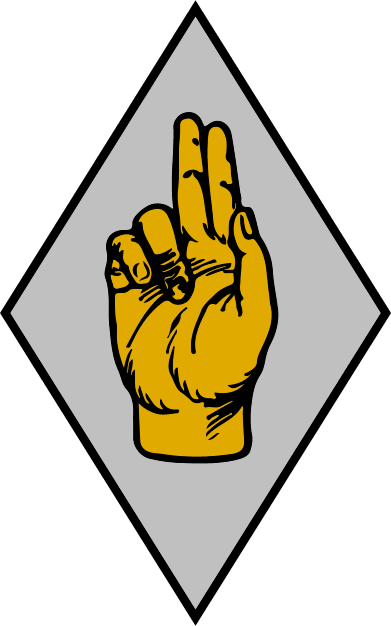The Anointed
Holy warriors that protect the faithful and smite the heretic, though that does of course depend on how you define both of those categories.Extract from Maximilian Hoherberg von Zottehal’s History of the Known World. The military arm of the Pantheon of the North, the Anointed are a force of Paladins, sworn to protect the Grand Lector, the institutions of the Pantheon and the faithful souls who adhere to it across the north of Turoza and beyond. The Anointed act as protectors of the holy city of Heilagur, act as guardians of important temples and shrines, act as escorts from important dignitaries of the Pantheon, and act as a strike force, when the Grand Lector sees fit, to strike at heresy wherever it may be, regardless of who actually rules the place in question.
Composition
Manpower
The Pantheon of the North are able to theoretically draw upon all of the around 2,500 Members of the Anointed, though in reality it is hard for them to field the entirety of this force in the same place at the same time. This is because at least 1,200 members of the Anointed have been dispersed across the north of Turoza to provide garrisons for important religious sites that are deemed to be strategically important enough that they will only be left unattended in the most dire of circumstances. As well as this, at least several hundred Anointed can expect to be deployed away from the Pantheon’s centre at Heilagur, acting as escorts for clergy, messengers, envoys and travelling to take up positions in garrisons outside of Heilagur, which further reduces the number of Members available for swift mobilisation. The garrison of Heilagur always has a contingent of 800 Members, who are solely deployed as guards for the holy city, its people and institutions, and they would only be deployed away from Heilagur under the most extraordinary of circumstances. That leaves, on average around 300 Members of the Anointed, who are stationed in Heilagur and who are primed to act as a quickly mobilised strike force, or smaller strike forces, that can be despatched to deal with situations or emergencies with as little as a day’s notice.
All Members of the Anointed are expected and trained to undertake any one of these duties, along with the fact that they regularly rotate between different deployments every couple of months or so. Although the number of Members of the Anointed seems somewhat limited, each of them is highly trained and can call upon the divine favour of one of the Pantheons Gods or Goddesses, making them more than capable of taking on soldiers from other military forces that heavily outnumber them.
Equipment
Alongside their weapons and armour, all Members of the Anointed, when travelling away from their home barracks in Heilagur will always be equipped with holy water and a supply of medicinal herbs, in addition to the supplies and gear that they carry for their own subsistence. Those Members that are travelling in the region of the Mountain Principalities, especially those travelling near the Countship of Macbet, will normally be provided with at least one wooden stake, in case they encounter any Vampires.
Regardless of whether they are travelling across Turoza, whether they are stationed at a smaller garrison, stationed in Heilagur or are on leave, all Members of the Anointed will wear a diamond shaped silver medallion (see image), with the symbol of an anointing hand rendered in gold. This medallion not only marks them out as members of the Anointed, but also is used as a focus for when Members call upon divine power or inspiration to help them.
Weaponry
In terms of their armament, the Anointed are issued as standard with a spear, longsword, kite shield, heavy crossbow and quarrels and a dagger. In reality, not all Anointed will carry all of these weapons at any one time, especially if they are stationed at a garrison, but all of them are trained in the use of all of them to a high standard. In terms of armour, Members of the Anointed wear breastplates, with additional plate armour bracers, grieves and shoulder pieces. They all wear a long chainmail shirt, that reaches to just above their knees underneath all of this, and they wear conical helms with nose and ear protectors.
Structure
Members of the Anointed are trained to operate with limited, or no structure, mostly because in a lot of cases they will be operating in small groups, which may even be as few as two or three people, and it is not uncommon for Members to be deployed to a garrison a place, or undertake a mission where they are alone. However, in order to stop matters from descending into chaos when they operate in detachments, which are generally comprised of around 20 individuals, or when they operate in larger formations there is a hierarchy built into the system that is based on the number of years a Member has been in service. The longer a Member has been part of the Anointed, the more experienced and competent they are supposed to be, and they are therefore viewed as being of a higher rank to those below them. When operating in small groups, detachments or larger formations, the commander is always deemed to be the Member who has served in the Anointed for longest.
In order to ease distinguishing the length of service of one member from another, for every year served in the Anointed, a Member adds a vertical gold bar, about 3cm/inch in height and 1cm/c.0.3inches in width, to the upper arm of their cloth uniforms, and to the front of their breastplates, so that their length of service can be distinguished regardless of whether they are wearing their armour or not. For every ten years served, the nine bars preceding it are replaced by a single gold, five pointed star. It is generally marked as a great achievement to receive a star, with special ceremonies being held to mark Members who have received their first, second, third, fourth and occasionally even their fifth star.
The Anointed as a whole are theoretically commanded by the Grand Lector, the head of the Pantheon of the North, though in reality they are commanded on a day to day basis by the Blessed Captain, who is a Member of the Anointed that has been selected from the ranks of those Members that hold at least three stars of more (i.e. 30 years of service), and who have excelled themselves during their service. The Blessed Captain acts as the Grand Lector’s key military advisor, and is the highest rank that can be attained in the Anointed. Blessed Captains will tend to serve for life once selected, and they are selected by the Grand Lector themselves.
Tactics
Because of the variety of duties that they are expected to undertake, Members of the Anointed have to be flexible in their fighting styles and competencies, so that they can effectively engage an enemy as an individual, a small group or a larger formation.
The default formation for Members of the Anointed is to act in small detachments of around 20 individuals, who will take up different roles within the detachment dependent upon the situation at hand. For example, some members will form a defensive position to hold back an enemy force, whilst others will utilise ranged weapons to pick off key threats, leaving others free to call upon the power of the Pantheon's deities to aid or bolster the other members of their detachment. When operating as part of a much larger force, the Anointed will tend to allocate specific roles to specific Members, who will then form up into pseudo-regimental units, with a specific focus on mêlée, ranged fighting, support, skirmishing or mounted combat. Given the rarity of large enough numbers of Anointed being fielded, it is not often that they will act as a small army, and it is only once more than several hundred Anointed have been fielded that they will stop operating in their individual detachments.
In addition, all Members of the Anointed are trained to be able to act and fight efficiently as individuals in combat. Given that Members who find themselves alone in combat will often be protecting a sacred site, or important individual, their default stance is to act defensively, and to use all of their surroundings to aid in the combat, rather than to act aggressively, or recklessly, and be outmanoeuvred or overwhelmed.
Training
All Members of the Anointed are trained to a very high standard in the use of their arms and armament, alongside the care and maintenance of their weapons and armour as well. In addition, all new Members are given detailed training in wilderness survival and bush-craft, to ensure that they are able to survive in the field, or in remote garrisons in the most self-sufficient way possible.
As well as this, given that the Anointed are a force of Paladins, all Members are trained in the use of Magic, though depending upon how magically sensitive the member in question is, it can vary as to how much power they are able to wield in this regard. An Anointed Member’s divine patron can theoretically be any of the Deities from the Pantheon of the North, and as part of their training they have to undergo a significant amount of spiritual exercise and prayer to see which of the Pantheon’s gods and goddesses commune with them and extend their patronage to the Member in question. Most often it is Njördr, Balder and Thorfor who take an interest in Members and offer their patronage to them, but the other Deities also do so, dependent upon the personal qualities of the individuals in question. Any Member that is patronised by Fenrisúlfr is generally treated with great caution, as it is assumed that one must have a savage streak deep inside if one has attracted the attention of the god of death.
Logistics
Logistical Support
Members of the Anointed are trained to be predominantly self-sufficient, something that comes in handy given that they are frequently used as small, fast moving strike forces across the north of Turoza and beyond, as well as being regularly deployed in small numbers to accompany the Pantheon’s clergy on journeys that are considered to be dangerous, or important in some strategic, theological or political sense. A number of Anointed are also stationed across Turoza’s north to protect important religious temples or sites of significance, where they serve as a garrison of sorts, that may well be comprised of as few as two Members, or where a Member may even find themselves guarding their post alone. A key component of their training therefore, is based around bush craft and wilderness survival.
Having said that, the Anointed that are stationed in the garrison of the holy city of Heilagur receive a vast amount of support from a whole cadre of servants who provide for their every needs. All Members of the Anointed look forward to the time that they are rotated back onto duty in the garrison of Heilagur, which for them is the equivalent of a much welcome break, given that the duties, though dull, are far safer, and there is always a warm meal and bed to go back to at the end of a shift on watch.
Recruitment
All those who are faithful adherents to the Pantheon of the North are eligible to join the Anointed, as long as they are deemed to be physically fit, with a sufficient level of piety and depth of faith, and an unshakable desire to protect the Pantheon of the North and its spiritual and temporal presence in Ulskandar. Given the sphere of influence of the Pantheon of the North over almost the whole of the north of Turoza, there is always a supply of keen potential recruits arriving at Heilagur, wanting to join the ranks of the Anointed. This means that the recruiters can make all potential candidates go through a series of rigorous physical, mental and spiritual tests to ensure that they are of the desired standard and capability. Preference for admittance to the Anointed is generally given to those that are exceptionally physically fit, and those with a heightened sense of magical sensitivity.
Medallion of the Anointed






Comments